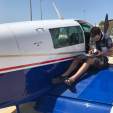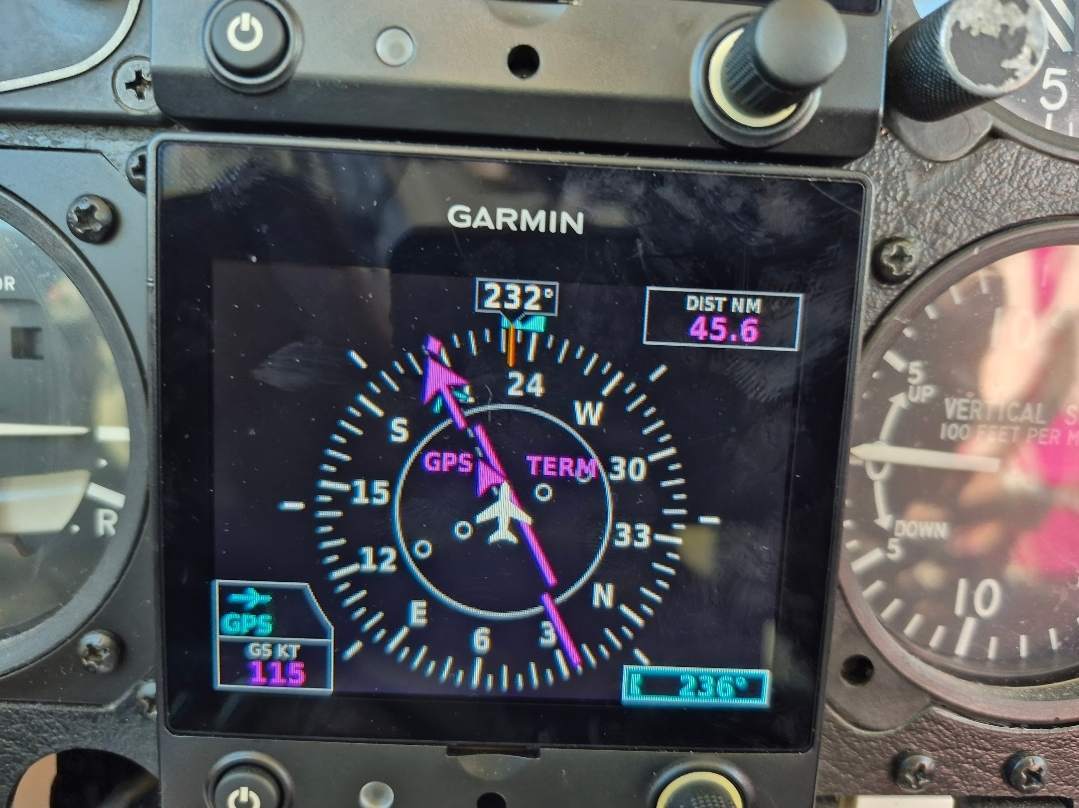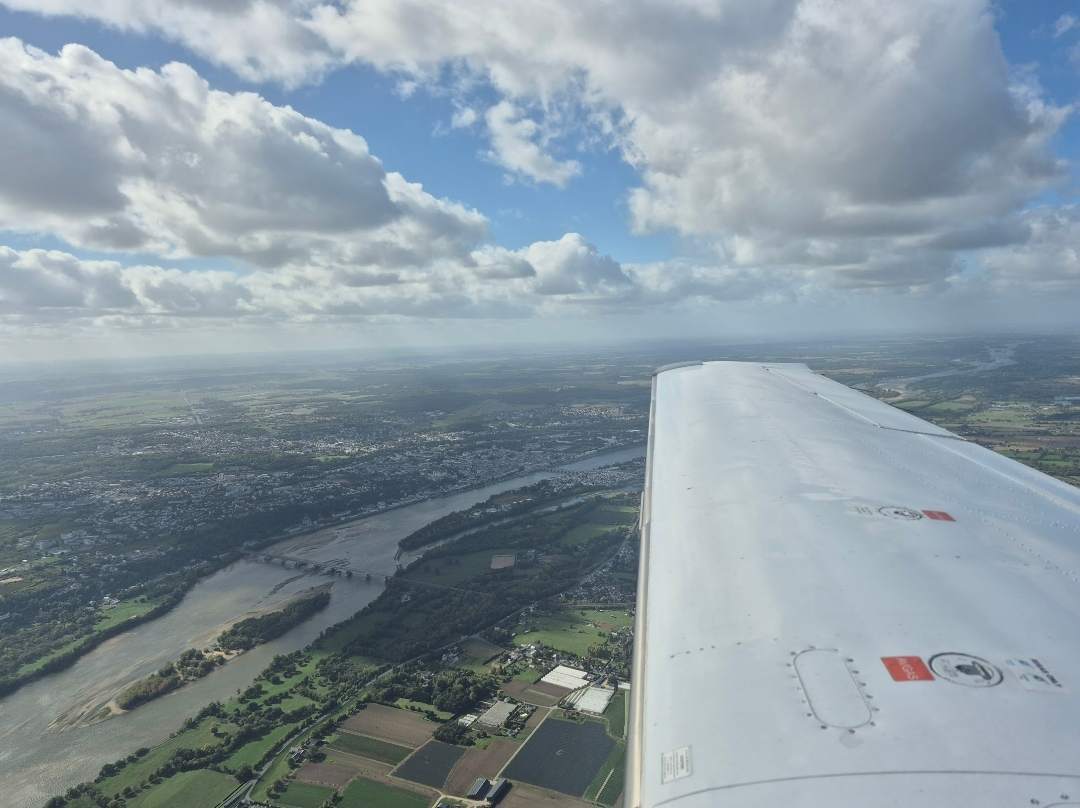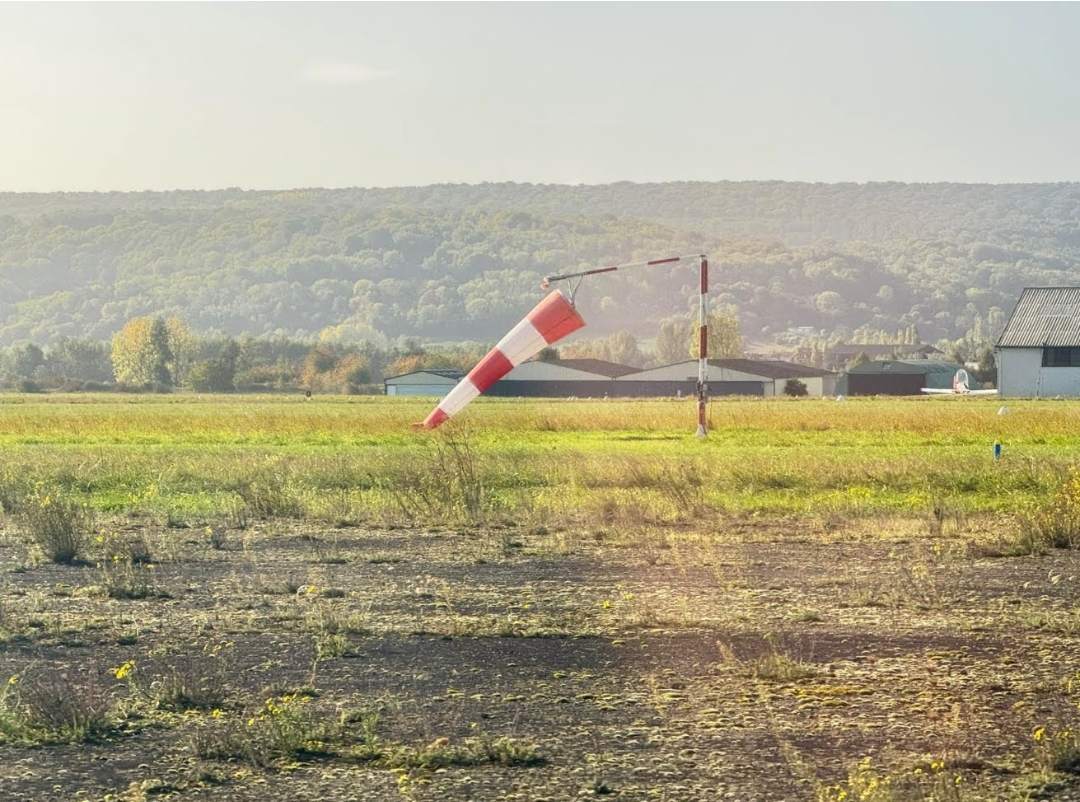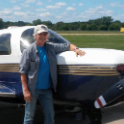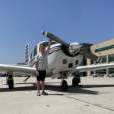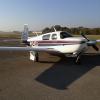All Activity
- Past hour
-
NEW NEWS FROM LASAR AND MOONEY AS OF 10/2/2025
MikeOH replied to cliffy's topic in General Mooney Talk
While I sure like the sound of that...I would think the devil is in the details. Namely: So, it would seem this could get VERY tricky without an 'authority' such as a DER 'blessing' the 'new' design. The Duke's landing worm-gear set comes to mind...first you'll need a NEW gear set to copy as you need original, NOT worn, dimensions. How do you establish tolerances? Then, you need to determine material, and hardening (and depth), maybe surface finish, etc. -
NEW NEWS FROM LASAR AND MOONEY AS OF 10/2/2025
Sabremech replied to cliffy's topic in General Mooney Talk
@Cliffy, You do not need the manufacturers drawing, DER approval or approved data for an OPP. What you do need is an original part to use to make the new one and be able to prove your part meets or exceeds the original part if ever challenged by the FAA to prove it is an equivalent. Of course having the drawing would be optimal but not likely from Mooney, DER would be nice but not required as well as some sort of approved data. You quoted the OPP rule fairly well but then went off course with what I’m disagreeing with you here! I have done OPP parts as we all know and have had numerous conversations with the FAA on this topic. The one inconsistency is the FAA between offices. -
Yeah the FIS-B weather is probably set to U.S. rather than regional
-
I get a physical most years, and take the BasicMed online course every other year. Then I go to the local urgent care for the exam every four years. Why do you get the BasicMed physical more often than required?
-
Have you done an inflight mag check at cruise power settings? This might provide confidence that the mag/harness/plugs are happy. Two blade or three blade prop? Three blades may be perceived to vibe more. Make sure your tach is marked correctly for your POH/STC (as applicable). Verify the accuracy of the tach to make sure you’re not in a caution/red zone. A landing light lens which smooths the front of the cowling has been known to mediate the vibe sensation. How old are the engine mount isolators. Closely inspect the engine mount for cracks. I’m sure your gusset AD has been done, as a ‘71 C. And I agree with @Robert Hicks to have the prop dynamically balanced.
-
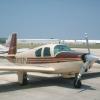
NEW NEWS FROM LASAR AND MOONEY AS OF 10/2/2025
cliffy replied to cliffy's topic in General Mooney Talk
As I said- Mooneys will die a lingering death as the supply of USED parts dries up. We are talkin about an entity willing to make ANY part we need NEW and keep the fleet alive. Used parts have always been in the mix Just not new parts that can keep the AOGs down. That doesn't take into account used parts that may not be viable like the rubber bellows between the carb and cowl. Ho many of those USED will be a reasonable replacement part? If not available the airplane is a paper weight until one is found that can be used - and at what cost? You still need some sort of Approved Drawings to go OPP. You just can't go out and make anything you want anyway you want. Manufacturers drawings, DER approval of design or, reference to some other "approved data" This is the area that is the biggest hurdle to OPP - the data to make the part to. Below I have attached an article written by Bill OBrien (long deceased) He was the FAA go to on many things OPP This article is somewhat dated but still the guidance is good Bill O’Brien, NRS Along with the pilot shortage and mechanic shortage there is also a parts shortage that plagues the general aviation industry. Because supply and demand are out of balance the cost of new and used parts seem to increase every day. Let’s examine the reasons why this is so. First, we have an old fleet. The average general aviation single engine airplane is approximately 32 years old. The average age of GA multi-engine reciprocating aircraft is close to 27 years old. The average age for the turbine powered multi-engine propeller driven aircraft average out around 19 years of age. So do to long term wear and tear the demand for replacement parts and large sub-assemblies is much greater today than it was even 10 years ago. The second reason is our General Aviation fleet has been well maintained over the years. So well maintained in fact, the average GA aircraft with a mid time engine and decent avionics has appreciated to two or three times it’s original purchase price and is still climbing. Yet even in that land of many zeros the older aircraft are still substantially lower in price than the cost of brand new aircraft with similar performance numbers and equipment. So the value of older aircraft in good shape are proven investments that over time has beat the DOW JONES average. So we have an economic imperative on the part of the owners to keep maintaining older aircraft in flying condition which increases the demand for replacement parts. The third reason is the increasing production costs to make a part. Today aircraft manufacturers are not making makes and models of aircraft in the same quantity they made them back in the seventies. So the production runs for parts are not as frequent and not as many parts are produced. In addition it is not cost effective for a manufacturer to make a lot of parts even if the unit price for each part is out of this world because taxes on maintaining a large inventory of parts would eat all of the profits. This low parts production keeps the supply of replacement parts low. The fourth reason is that some manufacturers would prefer that their older makes and model aircraft that they made a million years ago would quietly disappear from the aircraft registry. This retroactive birth control on the part of the manufacturers may seem not to make any sense until you look at aircraft market dynamics of creating demand and reducing costs. First , each older aircraft that is no longer in service creates a demand for a new, more expensive aircraft to take its place. Second, despite some tort claim relief granted to GA manufacturers in the early nineties, the fewer older aircraft there are in service, the manufacturers of those aircraft enjoy reduced overall liability claims and ever decreasing continuing airworthiness responsibilities. So how are we going to maintain these older aircraft with an ever dwindling parts supply when Part 21, section 21.303 Replacement and modification of parts requires us to use the Parts Manufactured Approval (PMA) parts on a type certificated product? Well, the same rule grants four exemptions to the PMA requirement. Before I segue into the subject of “owner produced parts” as called out in section 21.303 which is the purpose of this article. I would like to create a small uproar with this statement: “ FAA Airframe and Powerplant rated mechanics can maintain, repair, and modify parts, but they cannot make a brand new part and call it a repair.” Before you accuse me of losing dendrites by the minute, check out section 65.81 General privileges and limitations. The section talks to maintenance, preventive maintenance, and alterations but not to manufacturing of parts. Nor is it implied privilege in Part 65, because Part 21 section 21.303 says “NO PERSON” may make a REPLACEMENT part for a TC product unless that person has a PMA, etc. While I write this I can remember 25 pounds ago and when I had hair, I worked in the real world and I specialized in making engine baffles for Lycoming engines. Before someone accuses me of bureaucratic ventriloquism which is roughly translated as “talking out of both sides of my mouth.” My weak defense is, I made the parts because I thought I could.” It never dawned on me that I could not legally make a part. Some of you may be astounded that I make this confession freely. Its no big thing because I know the statue of limitations has run out years ago and a jury of my peers would never look me in the eye and convict me. So here is our problem that we must solve. Since mechanics cannot legally make parts for aircraft and aircraft need replacement parts, how are we going to keep the fleet flying? If we cannot find PMA, TSO, standard, or production holder replacement parts, we are left to make the part under the owner produced option under section 21.303(b)(2). However, we must remember that the part is for the owner/operator’s aircraft only and is not manufacturered for sale to other TC aircraft. To get through confusing regulatory policy with our pride intact, lets try the question and answer routine. (Note: This policy is taken from FAA ‘s AGC-200 policy memorandum to AFS-300 on the definition of “Owner Produced Parts” dated August 5, 1993) Question 1: Does the owner have to manufacturer the part himself in order to meet the intent of the rule? Answer 1: No, the owner does not have to make the part himself. However to be considered a producer of the part he must have participated in controlling the design, manufacturer, or quality of the part such as: Question 2: Can the owner contract out for the manufacturer of the part and still have a part that is considered, “owner produced?” Answer 2: Yes, as long as the owner participated in one of the five functions listed in answer 1. Question 3: Can the owner contract out the manufacturer of the part to a non-certificated person and still have a part that is considered “owner produced.” Answer 3: Yes, as long as the owner participated in one of the five functions listed in answer 1. Question 4: If a mechanic manufactuered parts for an owner is he considered in violation of section 21.303(b)(2)? Answer 4: The answer would be no if it was found that the owner participated in controlling the design, manufacture, or quality of the part. The mechanic would be considered the producer and would not be in violation of section 21.303(a). On the other hand if the owner did not play a part in controlling the design, manufacture, or quality of the part the mechanic runs a good chance of being in violation of section 21.303 (b)(2). Question 5: What kind of advice you can give on how a mechanic can avoid even the appearance of violating section 21.303(b)(2)? Answer: First, a mechanic should never make a logbook or maintenance entry saying that he made a part under his certificate number. This foopah will send up a flare and get you undue attention from your local FAA inspector which you could do without. However, the mechanic can say on the work order that he helped manufacturer an owner produced part under 21.303 (b)(2). Second, the owner or operator should be encouraged to make a log book entry that is similar to section 43.9 maintenance entry that states: The part is identified as an owner produced part under section 21.303 (b)(2). The part was manufacturered in accordance with approved data. The owner/operator’s participation in the manufacturer of the part is identified such as quality control. The owner must declare that the part is airworthy and sign and date the entry. Question 6: Is there anything else a mechanic must do? Answer 6: The mechanic must ensure that the owner produced part meets form, fit, and function, and within reasonable limits, ensure that the part does meet its approved type design (e.g. like looking at the approved data used to make the part). Then the mechanic installs the part on the aircraft, makes an operational check if applicable and signs off the required section 43.9 maintenance entry. Question 7: What is the owner responsible for, and what is the mechanic responsible for, concerning owner produced parts? Answer 7: The owner is responsible that the part meets type design and is in a condition for safe operation. The mechanic is responsible for the installation of the owner-produced part is correct, the installation is airworthy, and a maintenance record for installing the part is made. Question 8: How does the owner or operator get the approved data to make a part if the manufacturer and other sources are no longer in business? Answer 8: For aircraft that the manufacturer is no longer supporting the continuing airworthiness of then the owner or operator can petition the FAA Aircraft Certification Directorate under the Freedom of Information Act for the data on how the part was made. Or the owner or operator can reverse engineer the part and have the data approved under a FAA field approval or if it is a real complicated part, have the data approved by a FAA engineer or FAA Designated Engineering Representative. Question 9: What happens to the owner produced part on the aircraft if the original owner sells the aircraft? Answer 9: Unless the part is no longer airworthy, the original owner produced part stays on the aircraft. I hope that I spread some light on the murky subject of owner produced parts so the next time instead of saying to the owner of an broke aircraft: “Sure, “I” can make that part”, you will now say “Sure, “WE” can make that part.” - Today
-
Week-end trip from Rouen (LFOP) to Saumur (LFOD), the hardest bit was climb to 2000ft as it was windy (storm Amy), however, we know the worst was behind and we were flying toward nicer weather. On return the windsock has given up indicating !
-
NEW NEWS FROM LASAR AND MOONEY AS OF 10/2/2025
MikeOH replied to cliffy's topic in General Mooney Talk
It is proof of conformity to the step one 'design', NOT necessarily to the original manufacturer's blueprints. This may well require a DER. I.e., it is legal for a part to be 'reverse engineered'; you just need to prove conformity to the 'new' design. -

NEW NEWS FROM LASAR AND MOONEY AS OF 10/2/2025
FlyingDude replied to cliffy's topic in General Mooney Talk
How do you guarantee this, for example, for a push rod, without having the factory blueprints? -
The exact same way I know it's time for a flight review and other time-limited requirements.
-
I do the same as you.
-
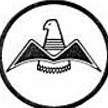
IO-360 ‘warm engine’ start on M20J
Shadrach replied to Tiny18Driver's topic in Modern Mooney Discussion
I get it, it's the difference between cooking and using a recipe. A recipe is all we have initially. However, over time it's a good idea to learn how to make the dish and what makes it work. Knowing the granular details behind the task at hand not only makes for more effective at performing the task, but it will also help identify when there's a secondary issue causing a problem, so that one doesn't sit there throwing fuel on an ignition problem just because the symptoms seem the same. If I had experienced an in-flight engine failure in my first several years of flying, I would have gone straight to the checklist. Now it's likely that the checklist would be my last step to ensure that I didn't miss anything while actually trouble shooting the problem rather than performing the rote...Mags on...check...Fuel selector both...check...Mixture rich...check. -
NEW NEWS FROM LASAR AND MOONEY AS OF 10/2/2025
MikeOH replied to cliffy's topic in General Mooney Talk
I'm not a lawyer, don't play one on TV, and did NOT stay in a Holiday Inn Express (ever!). So, with that disclaimer, my understanding is that, yes, OPP is allowed even if PMA parts are available. Thus, usurious pricing is a perfectly fine reason to go to OPP. I think there are four criteria to be legal: Properly designed (e.g. may have to use a DER), proof of conformity to that design, adequate documentation, and QA (ongoing, in some cases). Here is the cite: https://www.aopa.org/news-and-media/all-news/2024/january/09/aircraft-maintenance-owner-produced-parts -
I haven’t seen him in years. This would have been in the late 80s his last name was Cherry, first name was either Paul or Dave, I think. I’m real bad with names. He was my step dad’s nephew.
-
Get a dynamic balance
-
IO-360 ‘warm engine’ start on M20J
MikeOH replied to Tiny18Driver's topic in Modern Mooney Discussion
Thanks for that tip. I'll keep it in mind but, so far, I've not had that issue (thankfully!). My usual stunt is impatience and I advance the mixture too rapidly and get too much fuel. -
oisiaa started following M20C Vibration at Cruise
-
I just bought a 1971 M20C and it's been great so far across my first 6 hours and I'm still learning the quirks. At cruise speed it seems like there is normally a vibration. I don't think it's a misfiring cylinder since I'm getting good power (~144-146 KTAS). It seems like it might be a propeller harmonic or the prop is out of balance. I've tried adjusting the prop RPM up and down in 10 RPM increments which I'd expect to help if it's a harmonic, but that doesn't really seem to fix it. I also don't notice it 100% of the time so sometimes it runs totally smooth. I tried cracking the throttle until I saw a .1" decrease and then playing with the mixture up/down slightly but that didn't seem to fix it either. That leaves me with the opinion that the prop itself might be slightly out of balance. I'll have to look in the logs, but I'm pretty sure it was just balanced not much more than 100 hours ago. Any thoughts?
-
It's the ADS-B FIS-B weather overlay. There can be incomplete data that then gets filled in when you are in better reception. If you were to toggle that off momentarily, you should see it disappear.
-
AOPA's Basicmed website is helpful for this. They will send reminders (if you request it) as well as give you the required training and forms.
-
FlyingDude started following NEW NEWS FROM LASAR AND MOONEY AS OF 10/2/2025
-

NEW NEWS FROM LASAR AND MOONEY AS OF 10/2/2025
FlyingDude replied to cliffy's topic in General Mooney Talk
Is OPP allowed when PMA parts are available? Asking for a friend. -
NEW NEWS FROM LASAR AND MOONEY AS OF 10/2/2025
DCarlton replied to cliffy's topic in General Mooney Talk
One other factor for me in this discussion... I look at airplane ads all the time just like every other pilot. I can't find anything under $250K that I'd rather fly than a Mooney. I don't want an experimental unless it's built by a highly reputable professional builder and it's a fully tricked out award winner. An RV would be fun but would it feel like a toy after a while? What about a fixed gear Velocity; would I have engine cooling and engine maintenance issues? Not crazy about doors that can't be opened if the plane is upside down either (happen to a Velocity at our airport; flipped over by a jet). What about a fixed gear Glasair; a Sportsman might be nice but a II or III is 25 years old now. A Cessna or Piper would probably feel like a let down; just another utility vehicle. Don't really want an older beat up Cirrus at that price; may not want a Cirrus at all; never flown one. What else is there? A Flying Legend Tucano? A SLING? Hum... Mooneys still rock. -
That's good to know. Was the two week turnaround recent? They did what they said they were going to do when they said they were going to do it?
-
Which leads to another question. How do you know when it's time to have the doc fill out the form again. It is self managed or do you get a reminder from the FAA? I was thinking about every other year too instead of waiting until the deadline. I usually get an annual physical.
-
IO-360 ‘warm engine’ start on M20J
DCarlton replied to Tiny18Driver's topic in Modern Mooney Discussion
I parked my plane a couple of days ago after a 40 minute flight, had a "$100 Cobb Salad", walked around the airport and looked at my buddies RV project, had the discussion all over again about whether to use a hot or cold start procedure, then climbed in the plane and attempted the hot start procedure. It fired but stalled on the first attempt; I may have advanced the throttle too fast; I usually do. I tried again and it started right up. I was on the ground between 1-2 hours. I don't think you can go wrong by trying the hot start procedure first. -
PeytonM started following Stripes on GTN750xi Map page
-





